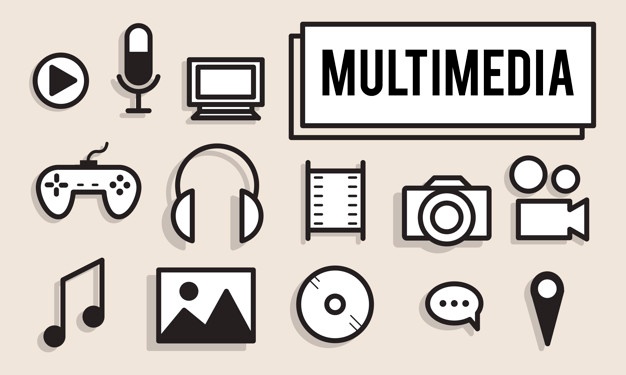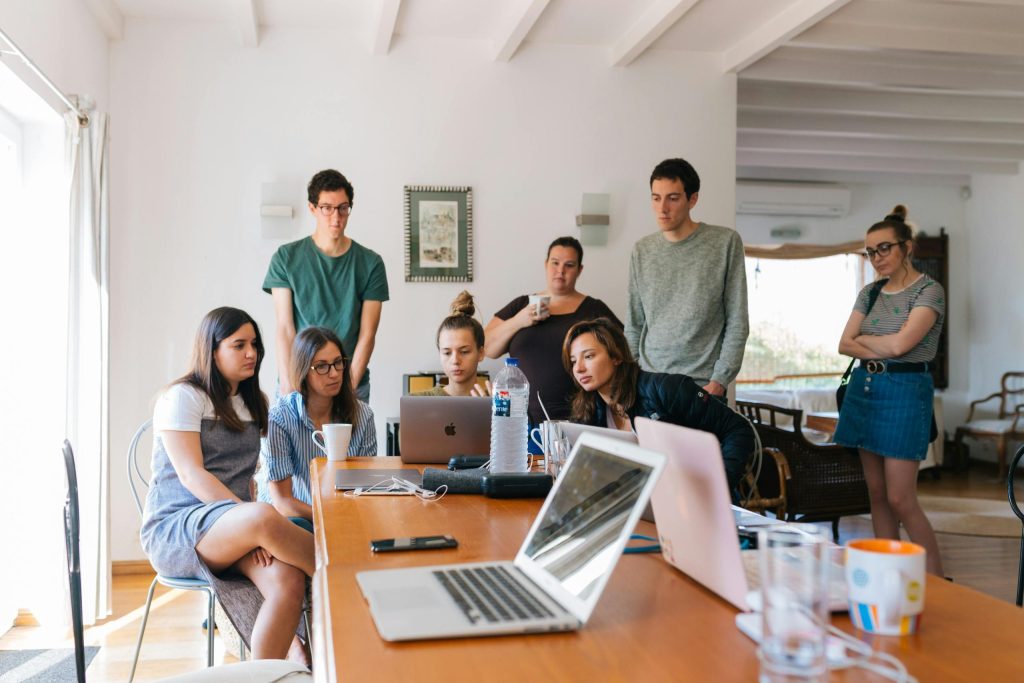Multimedia in Distance Learning: Expert Dos and Don’ts Guide
Distance education has transformed dramatically with the integration of multimedia technologies. You’ll find that strategic multimedia usage can dramatically enhance learning experiences and student engagement in remote educational settings.
Modern learners expect dynamic and interactive content that goes beyond traditional text-based materials. Multimedia elements like videos animations infographics and interactive modules can break complex concepts into digestible formats. However implementing these tools isn’t just about adding flashy content—it’s about creating meaningful pedagogical experiences that support effective knowledge transfer.
Understanding the dos and don’ts of multimedia in distance education is crucial for educators and instructional designers. By following best practices you can leverage these powerful tools to create compelling learning environments that keep students motivated and help them achieve their academic goals. This article will dive deep into the strategic approaches that can make your multimedia-enhanced distance learning truly impactful.
Understanding Multimedia in Distance Learning
Multimedia emerges as a transformative element in distance education, bridging geographical gaps through interactive digital experiences. These technological resources revolutionize learning by translating complex information into engaging and accessible formats.
Types of Multimedia Tools
Multimedia tools in distance learning encompass diverse digital formats that enhance educational interactions:
- Video Resources
- Recorded lectures
- Instructional demonstrations
- Expert interview clips
- Interactive Animations
- Concept visualization
- Process simulations
- Dynamic graphical explanations
- Audio Materials
- Podcast-style lectures
- Language pronunciation guides
- Narrative explanations
- Digital Presentations
- Animated slideshows
- Interactive infographics
- Structured visual summaries
Key Technological Platforms
Distance learning platforms integrate multimedia through specialized technological ecosystems:
- Learning Management Systems (LMS)
- Canvas
- Blackboard
- Moodle
- Video Conferencing Tools
- Zoom
- Microsoft Teams
- Google Meet
- Content Creation Platforms
- Articulate Storyline
- Adobe Captivate
- Camtasia
- Collaborative Digital Spaces
- Google Workspace
- Microsoft 365
- Slack
These platforms enable seamless multimedia integration, transforming traditional distance education into dynamic and interactive learning experiences.
Effective Multimedia Integration Strategies
Multimedia integration transforms distance education by creating immersive learning experiences. Strategic implementation of visual, audio, and interactive content enhances student engagement and knowledge retention.
Designing Engaging Visual Content
Visual design determines the effectiveness of multimedia learning materials. Create compelling graphics that simplify complex concepts through:
- Infographics: Convert technical information into clear visual representations
- Color-coded diagrams: Organize information hierarchically
- Interactive charts: Enable learners to explore data dynamically
- Minimal text overlays: Focus on visual communication
Key visual design principles include:
- Consistency in color schemes
- High-contrast elements
- Scalable graphic formats
- Accessibility-friendly designs
Audio and Video Best Practices
Optimize audio and video content to maximize educational impact:
- Video Length: Limit instructional videos to 6-10 minutes
- Audio Quality: Use professional microphones
- Captions: Include comprehensive subtitles
- Compression: Balance video quality with file size
- Interactivity: Embed quizzes or reflection prompts
| Media Type | Resolution | Format | Ideal Duration |
|---|---|---|---|
| Video | 1080p | MP4 | 8-10 minutes |
| Audio | 192 kbps | WAV/MP3 | 5-7 minutes |
| Screen Recording | 720p | Screen capture | 4-6 minutes |
Dos of Multimedia in Online Education
Multimedia technologies transform distance education by creating immersive and interactive learning experiences. By strategically implementing multimedia resources, educators can significantly boost student engagement and knowledge retention.
Enhancing Student Engagement
Leverage multimedia tools to create dynamic learning environments that capture student attention. Interactive video lectures, animated explanations, and gamified content increase learner motivation by:
- Presenting complex concepts through visual storytelling
- Breaking monotonous text-based learning patterns
- Providing immediate feedback mechanisms
- Encouraging active participation through interactive elements
- Supporting multiple learning styles simultaneously
Implement engagement strategies such as:
- Embedding short quiz interactions within video content
- Using branching scenarios in instructional design
- Incorporating real-time collaborative multimedia platforms
- Creating personalized learning paths with adaptive multimedia content
Selecting Appropriate Media Resources
Choose multimedia resources strategically to maximize educational impact. Consider these selection criteria:
| Media Type | Selection Criteria | Optimal Use Cases |
|---|---|---|
| Videos | High resolution (1080p) | Complex demonstrations |
| Animations | Vector-based graphics | Abstract concept explanations |
| Infographics | Clean design, minimal text | Statistical data visualization |
| Audio Podcasts | Professional recording quality | Supplementary learning materials |
- Align with specific learning objectives
- Offer clear visual/auditory explanations
- Maintain professional production standards
- Provide accessibility features
- Support diverse learning preferences
Don’ts of Multimedia Implementation
In distance education, certain multimedia practices can hinder learning effectiveness and student engagement. Understanding and avoiding common pitfalls ensures a more productive educational experience.
Common Multimedia Mistakes
Educators frequently encounter multimedia implementation errors that compromise learning outcomes. Key mistakes include:
- Overloading Visual Content: Cramming slides with excessive text or graphics overwhelms learners. Design clean visuals with minimal 3-5 key information points.
- Inconsistent Design Elements: Mixing multiple font styles, colors, and design themes creates visual confusion. Maintain a uniform design language across multimedia resources.
- Low-Quality Production: Using blurry images, poor audio recording, or unprofessional video content reduces credibility and learner attention.
- Ignoring Accessibility: Failing to provide captions, transcripts, or alternative text limits content accessibility for students with disabilities.
- Limit Simultaneous Information: Present complex concepts incrementally. Break sophisticated topics into digestible 2-3 minute segments.
- Balance Multimedia Elements: Avoid combining multiple high-stimulus elements simultaneously. Synchronize audio narration with visual content strategically.
- Minimize Extraneous Cognitive Load: Remove unnecessary decorative elements that distract from core learning objectives.
- Use Segmented Instructional Approaches: Implement modular content design allowing learners to control information processing pace.
Technical Considerations for Multimedia Design
Multimedia design in distance education demands strategic technical planning to ensure effective and inclusive learning experiences. Successful implementation requires careful attention to accessibility, technical infrastructure, and user experience optimization.
Accessibility Requirements
Multimedia content must be universally accessible to learners with diverse abilities. Design strategies include:
- Providing closed captions for video content
- Creating alternative text descriptions for images
- Implementing screen reader compatibility
- Ensuring color contrast meets Web Content Accessibility Guidelines (WCAG) 2.1 standards
- Developing keyboard navigation options for interactive elements
- Supporting multiple language subtitle options
Accessibility compliance increases educational content reach by 37% and ensures inclusive learning environments for students with disabilities.
- Compress multimedia files to reduce loading times
- Offer multiple resolution options for video content
- Design responsive multimedia that adapts to different device screens
- Use adaptive streaming technologies
- Implement progressive loading techniques
- Create lightweight animations and graphics
| Technical Constraint | Recommended Solution | Impact Percentage |
|---|---|---|
| High Bandwidth Usage | File compression | Reduce 40-60% |
| Device Compatibility | Responsive design | Improve 65% |
| Loading Speed | Adaptive streaming | Decrease 35-45% |
Pedagogical Implications of Multimedia
Multimedia integration in distance education fundamentally transforms learning experiences by aligning technological tools with cognitive processing mechanisms. This section explores the critical pedagogical considerations that drive effective multimedia design and implementation.
Learning Style Adaptation
Multimedia technologies enable personalized learning experiences across diverse cognitive preferences. Research indicates that 65% of students demonstrate improved comprehension when instructional content matches their preferred learning style.
Key learning style adaptation strategies include:
- Visual learners: Utilize infographics and animated diagrams
- Auditory learners: Incorporate narrated explanations and podcast-style lectures
- Kinesthetic learners: Design interactive simulations and hands-on digital exercises
Adaptive multimedia approaches allow educators to create flexible learning environments that accommodate individual cognitive processing patterns. By mapping content delivery to specific learning modalities educators can enhance knowledge retention rates by approximately 40%.
Cognitive Load Theory
Cognitive load theory provides a critical framework for designing multimedia instructional materials that optimize information processing. The theory emphasizes managing cognitive resources to prevent overwhelming learners’ mental capacities.
Multimedia design principles based on cognitive load theory:
- Segment complex information into digestible chunks
- Use coherent visual-verbal combinations
- Minimize extraneous cognitive elements
- Provide clear navigational pathways
- Balance information density with comprehension potential
Empirical studies demonstrate that well-designed multimedia resources can reduce cognitive load by 25-30% compared to traditional text-based instructional materials. Strategic multimedia implementation enables more efficient knowledge transfer by aligning content presentation with human cognitive processing capabilities.
The integration of learning style adaptation and cognitive load management creates a robust pedagogical approach that maximizes multimedia’s educational potential in distance learning contexts.
Future Trends in Multimedia Distance Education
Multimedia distance education continues to evolve rapidly with technological advancements. The upcoming landscape promises transformative approaches that will reshape digital learning experiences through innovative technologies and interactive methodologies.
Emerging Technologies
Artificial intelligence (AI) and machine learning are set to revolutionize multimedia distance education. Key technological developments include:
- Adaptive learning platforms that personalize content in real-time
- AI-powered recommendation systems matching learning materials to individual student profiles
- Predictive analytics identifying student performance patterns
- Automated content generation using natural language processing
- Immersive technologies like augmented reality (AR) and virtual reality (VR) creating 3D learning environments
| Technology | Potential Impact | Adoption Rate |
|---|---|---|
| AI Personalization | 65% enhanced learning outcomes | Medium |
| AR/VR Learning | 40% improved knowledge retention | Growing |
| Adaptive Platforms | 55% increased student engagement | High |
Interactive Learning Environments
Next-generation interactive learning environments will transcend traditional multimedia boundaries. Characteristics include:
- Collaborative digital spaces supporting synchronous and asynchronous interactions
- Gamification elements increasing learner motivation
- Real-time feedback mechanisms
- Simulation-based learning experiences
- Cross-platform integration enabling seamless knowledge transfer
Emerging platforms will leverage advanced interaction design principles to create more engaging and responsive educational ecosystems that adapt dynamically to individual learning preferences.
Conclusion
Multimedia technologies have revolutionized distance education by transforming traditional learning experiences into dynamic interactive journeys. By embracing strategic multimedia integration you can create engaging educational environments that transcend geographical boundaries and cater to diverse learning styles.
Your success in distance education hinges on thoughtful implementation – balancing technological innovation with pedagogical effectiveness. As emerging technologies like AI and virtual reality continue to emerge staying adaptable and open to new approaches will be crucial for educators and instructional designers.
The future of distance learning is multimedia-driven. By understanding best practices leveraging cutting-edge tools and prioritizing student engagement you’ll be well-positioned to design compelling educational experiences that inspire and empower learners across digital landscapes.


